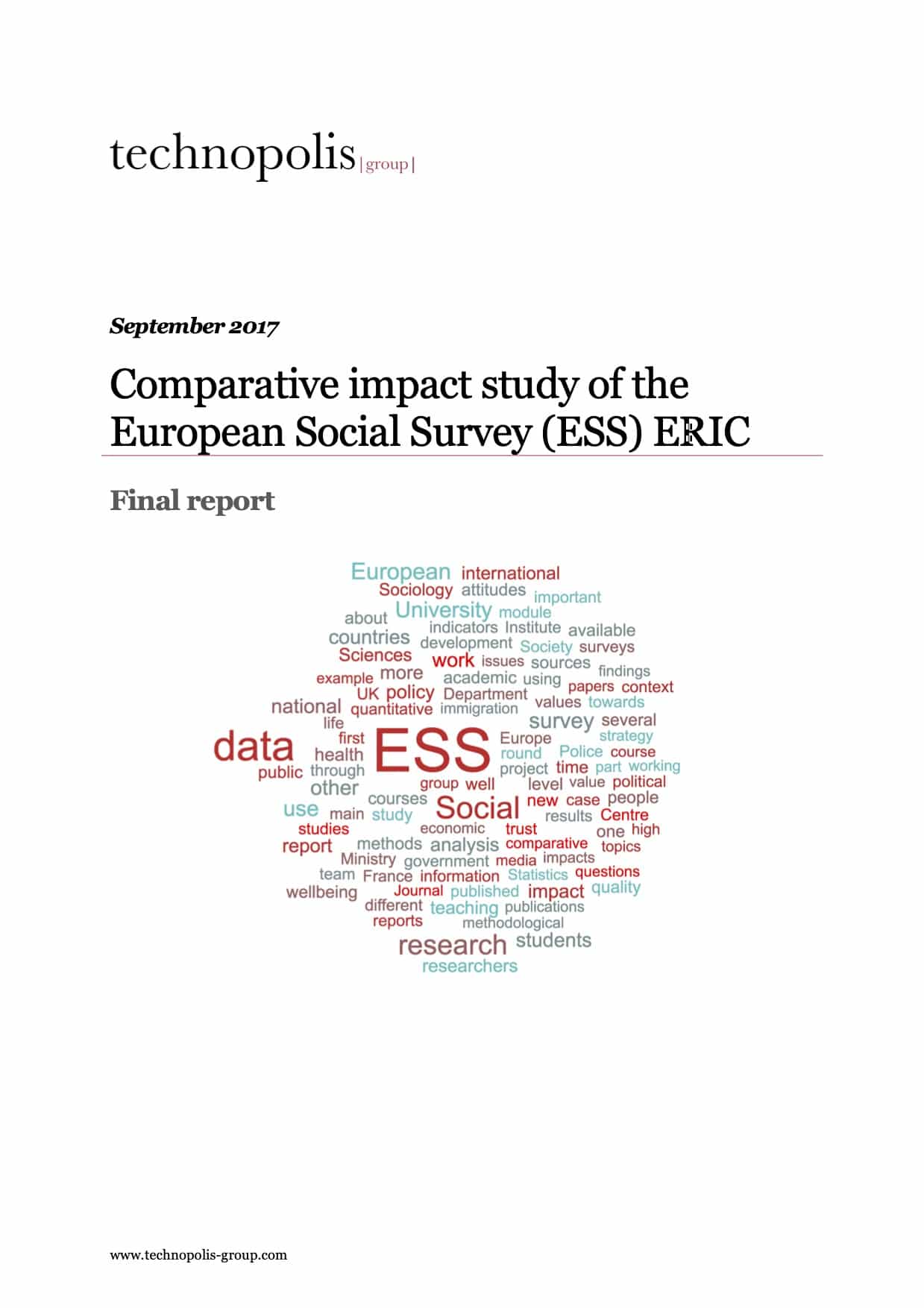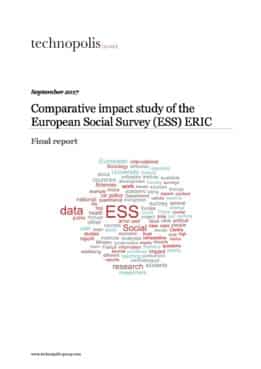Comparative impact study of the European Social Survey (ESS) ERIC
Publication date: 1 September 2017 | Report language: EN
Impact study of the European Research Infrastructure ‘European Social Survey’.
The ESS is a social survey deployed in comparable fashion in several countries, collecting information on a range of common areas of social scientific interest, for use by groups such as researchers, policymakers, think tanks, other intermediaries, and students. Our impact study assesses the range of impacts of ESS (academic and non-academic) and establishes the different ways in which impacts have been achieved by the different types of user groups. This is done at the aggregate level, as well as in a cross-national comparative approach.





